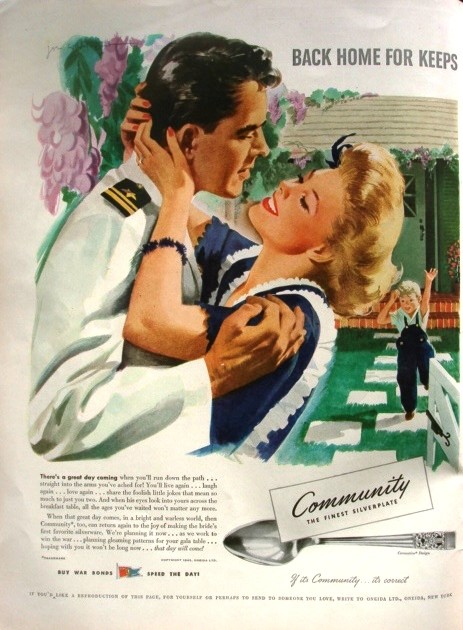What does a well-set table have to do with “complex” and “sticky” marriages?
What in fact are complex and sticky marriages, and…
for that matter what counts as a “well-set table”?
In Oneida- From Free Love Utopia to The Well-Set Table, Ellen Wayland-Smith takes a deep dive into her family’s history, and chronicles how Oneida, the very Americana silverware company, grew out of a spiritual odyssey beginning during the American religious revival of the 1830’s.
The Oneida community was created and dominated by John Humphrey Noyes, a complicated man, one who seemed to demand strict adherence and free love in somewhat equal parts, each in accordance with his own psychological and spiritual needs.
Long before the 1960’s and the pill, he was encouraging (and in many instances demanding) birth control. He experimented with eugenics, creating what he called a generation of Stirpicults (45 such children were born between 1869 and 1879, the author of Oneida being one of their descendants). He hoped that through human-breeding he would be able to make religious devotion inheritable, and thereby pass on his own strong sense of spirituality to another generation. But as a counterpoint it’s important to note that he also believed people shouldn’t be married to only one person (sticky marriage), as he proffered that such relationships interfered with one’s primary and most important relationship with God. His belief about complex marriage allowed him to justify and nurse his own wounds of rejection from his first love, and pursue multiple partners to fill the void he felt. Noyes reasoned that through a complex marriage, one involving multiple partners, each person was better able to access more parts of him/herself and thereby contribute more fully to the greater community.
Despite his frame of mind, the State of Vermont disagreed, and while living there in 1847 he was arrested for adultery, which resulted in his decision to leave and move his Community to Oneida, New York where Noyes knew some folks friendly to his ideas and where ultimately he made the decision to settle and build their first communal dwelling. The Oneida Community was a commune – it had a shared economy, and at least initially members shared in gender-neutral work. But John’s theories were also self-serving in that he struggled with his own sexuality, and by creating communal rules around sex, he was able to escape his fears and anxieties and reason his way to multiple partners.
Noyes’ induction of young girls into sexual relationships began with him, usually when they were about 14, and in 1879 resulted in his learning that he was about to be arrested for statutory rape, whereupon he left Oneida in the middle of the night and fled for Ontario, Canada, where the Community had a factory, and where he lived out his remaining years. Interestingly, I didn’t find any mention of the post-menopausal women who were responsible for introducing young boys to sex as ever having been accused of or indicted for statutory rape. A couple of months after arriving in Canada Noyes wrote back to the Community, stating that it was time for them to abandon the practice of complex marriage and live in a more traditional manner.
On January 1, 1881 the Community formally dissolved, converting their silverware venture to a joint stock company, and becoming Oneida Limited, LLC.

During and after WWII, a New York advertising agency (the brainstorm of a creative woman years ahead of her time) created a “Back Home For Keeps” campaign that was broadly disseminated during those years. The result of that campaign was that the Community Plate silverware, initially borne of a commune community, came to symbolize the 1950’s values of hearth and home. The image of a reunion between a handsome soldier long absent, returning home to his pretty, young wife long awaiting his return, was diametrically opposed to the espoused values of the Oneida community. However, during the intervening one hundred plus years since its inception the original Community members had disbanded, their descendants had distanced themselves from the spiritual, religious and sexual practices of their forbears, and Community Limited, LLC had become unrecognizable from its roots.
Oneida is an interesting read. By shining a light on the intricacies, layers, complexities, and stickiness of marriage, it provides an examination of an atypical marital construct. And in doing so, it asks questions basic to human, emotional, physical and legal relationships, and how we structure the families we create.


